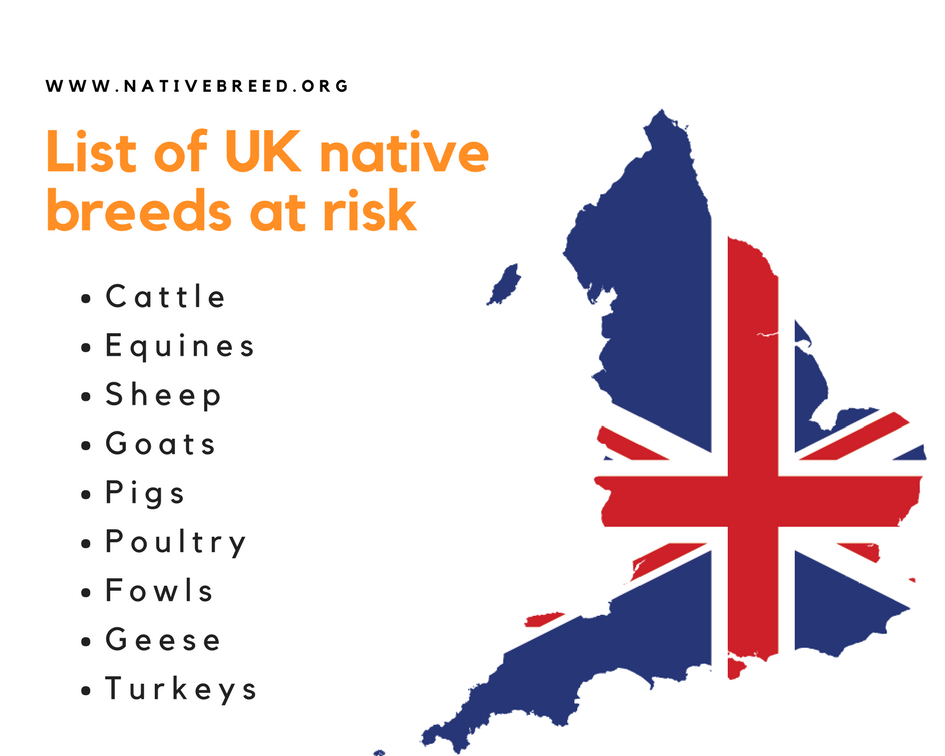Department for Environment, Food and Rural Affairs
United Kingdom Rural Development Programmes
Revised approved list of UK native breeds at risk
June 2014
Cattle – number of breeding females (threshold 7,500)
ABERDEEN ANGUS
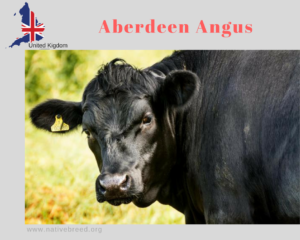
The Aberdeen Angus, sometimes simply Angus, is a Scottish breed of small beef cattle. It derives from cattle native to the counties of Aberdeenshire and Angus in north-eastern Scotland. This breed cattle have been recorded on Scotland form 16th century. The Angus is naturally polled and solid black or red, though the udder may be white. The native colour is black, but more recently red colours have emerged.
BEEF SHORTHORN
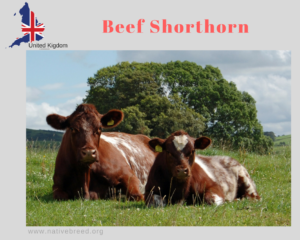
The Beef Shorthorn breed of cattle was developed from the Shorthorn breed in England and Scotland around 1820. By the early 1970s, the Beef Shorthorn breeders were concerned their cattle were too small and lacked muscle, especially when compared with the famous beef breeds that were starting to be introduced to the UK. To over come this issue , in 1976, the Beef Shorthorn Cattle Society sanctioned the introduction of Maine-Anjou blood into the breed. The decision to introduce Maine-Anjou blood into the Beef Shorthorn breed was very controversial at the time, but most breeders now acknowledge it was a necessary step which saved the breed from irrelevance.
BELTED GALLOWAY (including White Galloway)
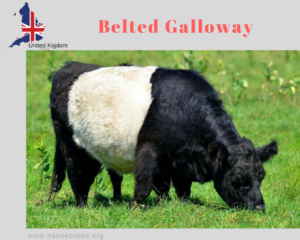
The Belted Galloway is a heritage breed of beef cattle originating from Galloway cattle that originated from Galloway on the west side of southern Scotland.
Galloway cattle are naturally polled (without horns). It has long hair coat and the broad white belt that completely encircles its body, This Galloway breed also called as “Oreo cow”.
Its coarse outer coat helps shed the rain, and its soft undercoat provides insulation and waterproofing, enabling the breed to spend winter outside.
BRITISH FRIESIAN
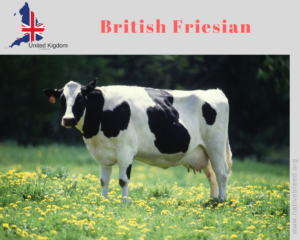
Holstein Friesians (often shortened to Holsteins in North America, while the term Friesians is often used in the UK and Ireland) is a breed of dairy cattle originating from the Dutch provinces of North Holland and Friesland, and Schleswig-Holstein in Northern Germany and Jutland. They are known as the world’s highest-production dairy animals.
The Dutch and German breeders bred and oversaw the development of the breed to obtain animals that could best use grass, the area’s most abundant resource. Over the centuries, the result was a high-producing, black-and-white dairy cow.
With the growth of the New World, markets began to develop for milk in North America and South America, and dairy breeders turned to the Netherlands for their livestock. After about 8,800 Friesians (black pied Germans) had been imported, disease problems in Europe led to the cessation of exports to markets abroad.
BRITISH WHITE
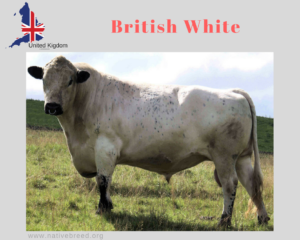
The British White has shortish white hair and has dark points – usually black, but sometimes red. The colored points include the ears, feet, eyelids, nose and often even teats. It is naturally polled (hornless), medium-sized and compactly built. There may be some colored spots on the body fur, and the skin beneath the fur is usually colored (grey or reddish), or pink with colored spots. The color-pointed pattern is found in many unrelated cattle breeds throughout the world – it is an extremely pale form of the similarly widespread color-sided or lineback pattern.
The red-pointed variant shows in about two percent of British Whites, but since red coloration is genetically recessive to black in cattle, many of the black-pointed animals also carry the red allele.
The color-pointed pattern shows strongly in crosses with other breeds, often with additional dark spotting if the other parent was solid-colored. As in other cattle, the polled characteristic is dominant over horns, so first crosses are also polled.
The breed is hardy and thrifty, and the animals readily graze rough vegetation such as rushes, nettles or heather, and they keenly browse many trees and shrubs. They rarely have calving difficulties.
CHILLINGHAM
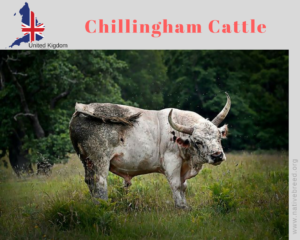
Chillingham cattle, also known as Chillingham wild cattle, are a breed of cattle that live in a large enclosed park at Chillingham Castle, Northumberland, England. In 2009 the cattle were described as “about 90 animals in Chillingham, which inhabit a very large park that has existed since the Middle Ages” The herd has remained remarkably genetically isolated for hundreds of years, surviving despite inbreeding depression due to the small population. There is also a small reserve herd of about 20 animals located on Crown Estate land near Fochabers, North East Scotland.
The Chillingham cattle are related to White Park cattle, in the sense that the Chillingham herd has contributed to the White Park, though there has been no gene flow the other way. Chillingham cattle are small, with upright horns in both males and females. Bulls weigh around 300 kg (660 lb), cows about 280 kg (620 lb). They are white with colored ears (they may also have some color on feet, nose and around the eyes). In the case of Chillingham cattle, the ear-color is red – in most White Park animals the ears are black (which is genetically dominant over red in cattle). Chillingham cattle are of generally primitive conformation while White Parks are of classical British beef conformation. A brief review of academic studies on the Chillingham cattle is available.
DIARY SHORTHORN
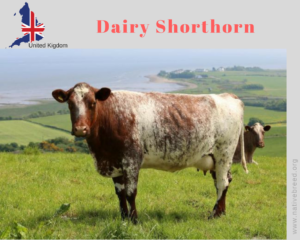
The Dairy Shorthorn is a British breed of dairy cattle. It developed from the Shorthorn, which itself came from County Durham, Northumberland and Yorkshire in northeastern England.
The breed is known as the Dairy Shorthorn in the United Kingdom, Ireland, Australia and South Africa, and as the Milking Shorthorn in Canada, New Zealand, and the United States. The Illawarra cattle breed of Australia is largely descended from the Dairy Shorthorn. The Swedish Red and Norwegian Red breeds also have some Shorthorn ancestry.
The Dairy Shorthorn is an average-sized breed, with mature cows averaging 140 cm (55 in) tall at the tailhead, and weighing 640 to 680 kg (1,410 to 1,500 lb). They are red, red with white markings, white, or roan. Red and white coat color genes in purebred Milking Shorthorns are co-dominant, resulting in the roan coloration and unique color patterns seen in the breed. Average milk production for the breed is about 7,000 kg (15,000 lb) in an annual lactation of 305 days, with 3.8% butterfat and 3.3% protein.
Milking/Dairy Shorthorn cattle are also known for high levels of fertility, grazing efficiency, and ease of management that result in the breed being highly suitable for low-input dairy operations in various production environments. Milking Shorthorns are known for their durability, longevity, and ease of calving as well as their versatility in a number of production environments.
DEVON (Red Ruby Devon)
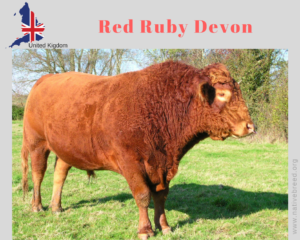
What are my special features?
This breed has deep burgundy medium-thick hair which is often long and curly during the winter with a creamy white switch on its tail. Devon Red Ruby cattle require little supplementary feeding and are ideally suited to grazing on land that has conservation value. Docile by nature and compact in size, the Red Ruby is an efficient grazer causing minimum damage to the land.
This breed is able to naturally lay down intramuscular fat within the meat, providing excellent marbling. The resulting tender beef is prized and well recognized internationally.
What is my history?
The native home of the breed is the South West of England, in particular, Devon. History records that the Romans took an interest in the red cattle when they occupied this area in 55 BC. The origins of the Devon Red Ruby are thought to be linked to the Longifrons and Urus cattle. There is also evidence suggesting that the seagoing Phoenicians may have brought some ancestral red stock from northern Africa or the Middle East to South West England. Some animal breeders speculate that this may explain the Devon Red Ruby’s remarkable ability to adapt to hot climates.
DEXTER CATTLE
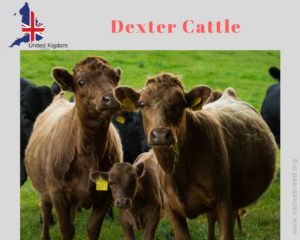
The Dexter originated in the South Western region of Ireland where they were originally kept by small landholders and known as the “poorman’s cow”. Like the Kerry, they are descended from the predominately black cattle of the early Celts.
The frequently heard theory that the Dexter is a comparatively new breed is a complete fallacy as the breed is fully described and mentioned by its proper name, in a report on Irish cattle written in 1845, by Mr. David Low.
From this publication, it is noted that the breed owes its modern appearance, name, and probable qualities to a Mr. Dexter who was an agent to a Lord Howarden who came to Ireland in 1750 and made his home in Co Tipperary. David Low stated that a Mr. Dexter had produced his curious breed by selection from the best of the hardy mountain cattle of the area, and to have succeeded to a very high degree.
At the turn of the 20th century, Dexters became the show cattle of the English gentry. As the 20th century progressed, Dexter numbers declined. In the 1970s, they were designated as rare and endangered. More recently, their attractiveness to small landholders has seen a significant increase in their numbers globally. As a result, Dexter is the best example of a domestic cattle breed saved from extinction.
GALLOWAY CATTLE
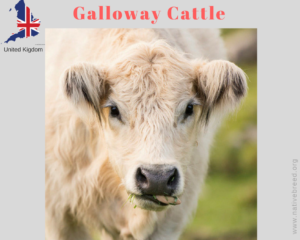
The Galloway is one of the world’s longest established breeds of beef cattle, named after the Galloway region of Scotland, where it originated, during the 17th century.
It is now found in many parts of the world, being exported to Canada in 1853, the US in 1882 and Australia in 1951. The breed enjoyed success during the 1950s but this subsided during the foot and mouth crisis. Today, the breed is enjoying a revival due to the demands of the beef market. The breed is considered the average size and has a thick coat due to the climate of their native Scotland.
GLOUCESTER CATTLE
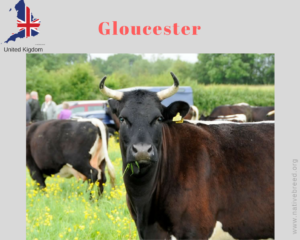
Gloucester cattle are strikingly beautiful and ideal for parkland and conservation management. They fit well into an extensive system and providing the land drains well and they have some shelter, they will thrive if out wintered, growing a good protective coat.
Docile and amenable, Gloucester’s respond well to individual care. A flat lactation curve gives an even production of milk for up to 300 days. This is kind to their udders and helps their longevity, for which they are renowned, breeding for 12 to 15 years. Gloucester’s also taken well to hand-milking and make ideal house cows.
GUERNSEY CATTLE
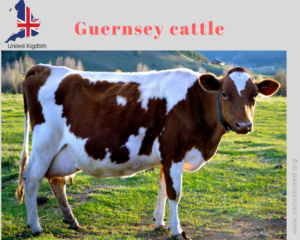
HEREFORD CATTLE
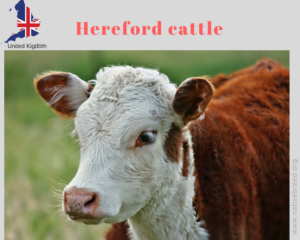
HIGHLAND CATTLE
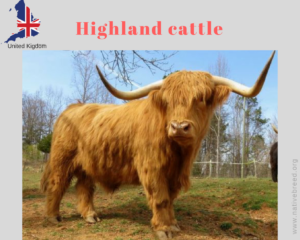
IRISH MOILED (Maol)
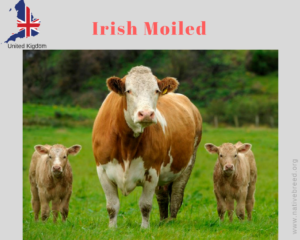
JERSEY COW
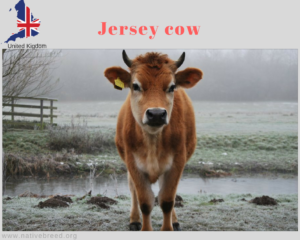
LINCOLN RED
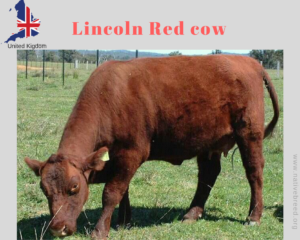
LONGHORN
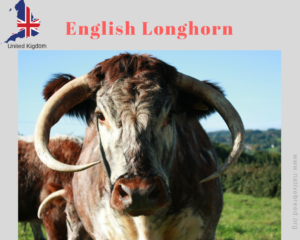
LUING
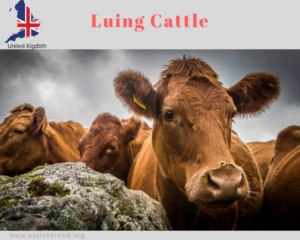
NORTHERN DAIRY SHORTHORN
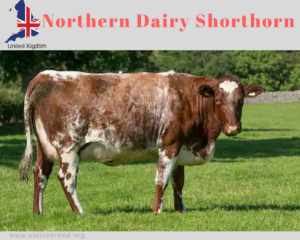
RED POLL
SHETLAND
SUSSEX
VAYNOL
WELSH BLACK
WHITE PARK
WHITEBRED SHORTHORN
Also Read : How to Recognise Native British Cattle Breeds
Equines – number of breeding females (threshold 5,000)
• British Percheron Horse
• Cleveland Bay Horse
• Clydesdale Horse
• Dales Pony
• Dartmoor Pony
• Eriskay Pony
• Exmoor Pony
• Fell Pony
• Hackney Horse
• Hackney Pony
• Highland Pony
• New Forest Pony
• Shire Horse
• Suffolk Horse
• Welsh Mountain (Section A semi-feral6 ) Pony
Sheep – number of breeding females (threshold 10,000)
• Badger Face Welsh
• Balwen • Black Welsh Mountain
• Border Leicester
• Boreray
• Cambridge
• Castlemilk Moorit
• Clun Forest
• Cotswold
• Dalesbred
• Derbyshire Gritstone
• Devon and Cornwall Longwool
Devon Closewool
• Dorset Down
• Dorset Horn
• Exmoor Horn
• Epynt Hardy Speckled
• Greyface Dartmoor
• Hampshire Down
• Hebridean
• Herdwick
• Hill Radnor
• Jacob
• Kerry Hill
• Leicester Longwool
• Lincoln Longwool
• Llandovery Whiteface Hill
• Llanwenog
• Lonk
• Manx Loaghtan
• Norfolk Horn
• North Ronaldsay /Orkney
• Oxford Down
• Portland
• Romney
• Ryeland (including Coloured)
• Shetland (Mainland)
• Shetland (Island4 )
• Shropshire
• Soay
• Southdown
• Teeswater
• Welsh Hill Speckled Face
• Wensleydale
• Whiteface Dartmoor
• Whitefaced Woodland
• Wiltshire Horn
Goats – number of breeding females (threshold 10,000)
• Bagot • Cheviot (Feral)
• Golden Guernsey
• Saanen
• Toggenburg
Pigs – number of breeding females (threshold 15,000)
• Berkshire
• British Landrace (Orig1 )
• British Lop
• British Saddleback
• Gloucestershire Old Spots
• Large Black
• Large White (Orig1 )
• Middle White
• Oxford Sandy and Black
• Tamworth
• Welsh
Poultry – number of breeding females (threshold 25,000)
Ducks
• Abacot Ranger
• Appleyard Silver
• Aylesbury
• Black East Indian
• Campbell
• Cayuga
• Crested
• Magpie
• Muscovy
• Orpington
• Rouen (British Standard/Exhibition)
• Shetland
• Silver Bantam Duck
• Stanbridge White
• Welsh Harlequin
Large Fowls
• Ancona
• Andalusian
• Araucana (British)
• Australorp
• Brussbar
• Campine
• Cochin
• Cream/Crested Legbar
• Croad Langshan
• Derbyshire Redcap
• Dorking • Faverolles (British)
• Hamburgh
• Indian/Cornish Game
• Ixworth
• Legbar
• Leghorn
• Malay
• Marans (British type)
• Marsh Daisy
• Minorca
• Modern Game
• Modern Langshan
• Norfolk Grey
• North Holland Blue
• Old English Game
• Old English Pheasant Fowl
• Orpington (Buff)
• Orpington (Non Buff)
• Rhodebar
• Rumpless Game
• Scots Dumpy
• Scots Grey
• Sicilian Buttercup
• Spanish
• Sultan
• Sussex
• Welbar
Miniature Fowls
• Ancona
• Araucana (British)
• Australorp
• Derbyshire Redcap
• Dorking • Hamburgh
• Indian/Cornish Game
• Leghorn
• Malay
• Minorca
• Modern Game
• Old English Game
• Orpington (Buff)
• Orpington (Non Buff)
• Rumpless Game
• Scots Dumpy
• Scots Grey
• Sussex
True Bantam Fowls
• Burmese
• Nankin
• Rosecomb
• Sebright
Geese
• Brecon Buff
• Chinese
• Greyback
• Pilgrim
• Sebastopol
• Shetland
• Toulouse (British Standard/Exhibition)
• West of England
Turkeys
• Blue
• Bourbon Red
• British White
• Bronze (American Mammoth/Cambridge/Crimson Dawn/Standard)
• Buff
• Narragansett
• Nebraskan
• Norfolk Black
• Pied/Crӧllwitzer
• Slate/Lavender
Last updated: 13 June 2014
Source : assets.publishing.service.gov.uk
